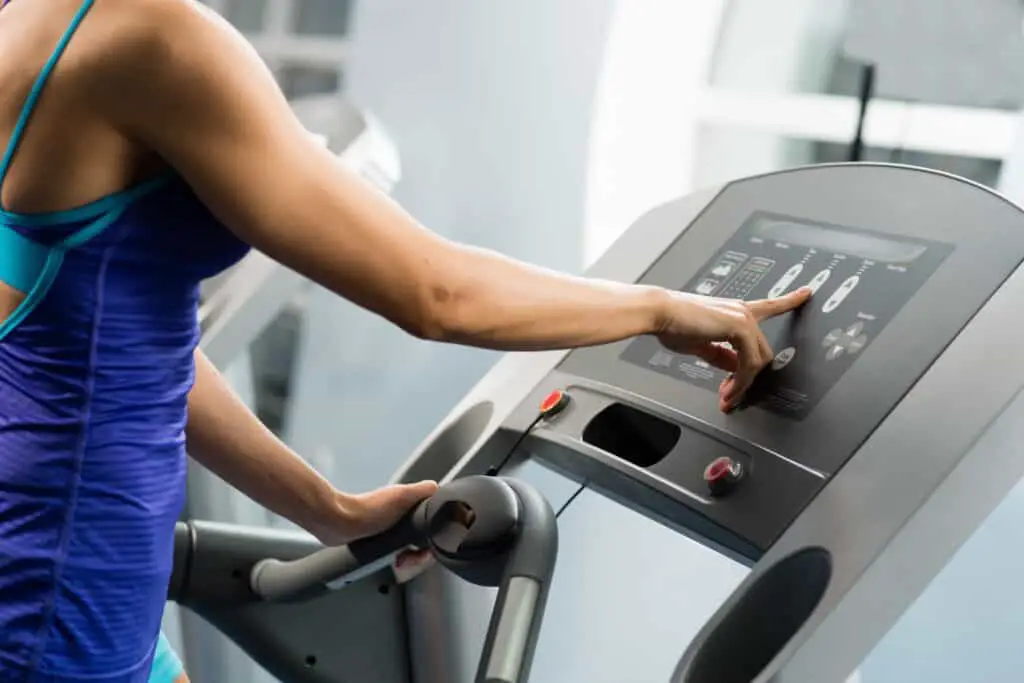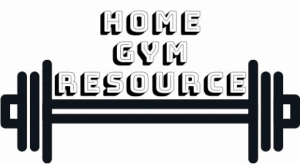I remember I was surprised the first time I learned that treadmills have horsepower ratings like cars do. But once you think about it, it makes perfect sense and it’s actually a very important spec to look at when buying a treadmill. But how much power is enough?
A treadmill needs at least 1.5 horsepower for walking and 2.5 horsepower for running. Generally, high-powered treadmills tend to be more stable and constant. Therefore, it’s best to pick more powerful treadmills if you’re heavy or intend to have intense workouts.
In this article, we will discover the minimum power output needed to run or walk on a treadmill. Read on for fascinating insights into these aspects and the pros and cons of using high-horsepower machines.
Or just find the fastest treadmill for home use here.
Contents
- 1 How Much Horsepower A Treadmill Needs
- 2 Minimum Horsepower for Walking on a Treadmill
- 3 Minimum Horsepower for Running on a Treadmill
- 4 Why Horsepower Matters For a Treadmill
- 5 The Benefits of Low-Horsepower Treadmills
- 6 Why High-Horsepower Treadmills May or May Not Be a Good Idea
- 7 Bottom Line
- 8 Favorite Cardio Accessories
How Much Horsepower A Treadmill Needs
Most treadmills need a minimum of 1.5 continuous horsepower (CHP) to work effectively. Your treadmill has a walking belt that needs the motor to spin. And not only that, it has to have enough power to keep the belt at the same speed under every footfall.
A 1.5 hp treadmill is suitable for walking and light jogging while 2.5 hp treadmill is the minimum for running. About 3 horsepower is a power level that serves anyone except the most demanding athletes well.
Pro Tip: When assessing motor power, focus on continuous horsepower (CHP), not just peak horsepower. Peak horsepower is a brief burst of power and doesn’t tell you as much. Treadmills rely on continuous horsepower because it’s what the motor can sustain over a longer period.
Haven’t bought a treadmill yet? Motor power is important but not the only deciding factor. Click here to find a complete guide on how to select the right treadmill for you.
The power needed varies based on your activity and weight. Walking and jogging require less power than running. For example, a man weighing 199.8 lbs (90.6 kg) needs about 1.6 hp to walk at three miles per hour with a 1% incline. On the other hand, a woman weighing 170.8 lbs (77.47 kg) requires approximately 1.4 hp for the same speed and incline.
For running at five miles per hour (8.05 kph) with a 1% incline, a man weighing 199.8 lbs (90.6 kg) would need 2.7 hp, while a woman weighing 170.8 lbs (77.47 kg) would need about 2.3 hp.
Suggested: User weight limits of home treadmills
Is a 1.5 HP Treadmill Enough?
A 1.5 hp treadmill is suitable for light or moderate use. It’s adequate for walking and occasional jogging but may not be powerful enough for intense running or heavy daily use. Especially if you’re a heavier person, you might notice the belt slowing down with every footfall when running on a 1.5 hp treadmill.
If you plan to use the treadmill for light exercise or walking, a 1.5 hp treadmill is a good choice although upgrading to 1.75 or 2 hp is advisable for many people. However, if you weigh less than the average person and walking or light jogging is all you want to do, 1.5 hp is great.
Is a 2.5 HP Treadmill Good?
The 2.5 hp mark is a sweet spot for most people. You get a treadmill that’s capable of running at decent speeds (usually up to 10 mph) while not getting too expensive. These are a significant step up from a 1.5 hp treadmill.
You’ll notice the speed is much more even and consistent. You also got a lot more headroom for running at higher speeds without the risk of overheating the motor.
Is a 3 HP Treadmill Good?
A 3-3.5 hp treadmill is a higher-end option and is capable of handling more intensive workouts. It’s suitable for running at higher speeds and can provide a smoother and more stable experience, making it a good choice for serious runners and individuals who plan to use the treadmill frequently.
These also make sense if you’re a heavier person or you like to do HIIT training which requires the motor to accelerate often and to high speeds. A 3.5 hp motor will do that much easier and repeatedly than a 2.5 hp one.
You do pay quite a bit extra for these over the weaker models though.
Are 4 HP Treadmills Best?
A 4 HP treadmill motor is not necessary for the average home user or even for many serious fitness enthusiasts. A 4 HP treadmill is typically found in commercial settings, such as gyms, where the equipment is subjected to heavy and continuous use by a large number of people throughout the day.
In those situations, they have a few benefits;
- Intensive and Continuous Use: If you plan to use the treadmill for long durations each day, or if you’re a professional athlete or a very serious runner, a 4 HP treadmill might be more appropriate. It can handle continuous, heavy use without overheating or straining the motor.
- Heavier Users: If you are significantly heavier than the average person, you need a more powerful motor as it can provide a smoother and more stable experience when running at higher speeds. You’ll find that treadmills with high load capacities have higher-powered motors.
- Commercial or High-Traffic Settings: In commercial or high-traffic environments, where multiple people will be using the treadmill throughout the day, a 4 HP treadmill can withstand the constant wear and tear.
- Specialized Training: If you’re engaged in specialized training that requires very high speeds or incline levels, a more powerful motor can provide the necessary capabilities. You have to be sprinting at pretty high speeds consistently.
For most home users, a 4 HP treadmill is overkill in terms of power and price. a 2.5 to 3.5 hp treadmill will likely serve you just as well but for a much friendlier price.

Minimum Horsepower for Walking on a Treadmill
You need a minimum of 1.5 hp to walk on a treadmill.
Generally, walking on a treadmill requires less power than running. However, the amount varies based on individual factors such as weight and speed, so it’s critical to consider these factors when estimating the amount of power you need.
So, how did I arrive at these values?
According to the CDC, the average weight for American males over 20 years old is 199.8 lbs (90.6 kg) while that of females over 20 is 170.8 lbs (77.47 kg).
If both set their treadmills at the 1% inclines, the value recommended by healthcare experts, and run at a speed of 3 mph (80.46 m/min), which is within the recommended 2 mph – 4 mph (53.6 m/min – 107.29 m/min) range, we’ll need to use this math discussion forum to estimate the amount of power they need.
In the male adult’s case, the calculations would be as follows:
- Weight = 199.8 lbs (90.6 kg.)
- Speed = 3 mph (80 m/min)
- Incline = 1%
- Time = 25 minutes per session, based on the minimum recommended 150 minutes per week. (This assumes you’ll be on the treadmill six days a week.)
- Distance travelled = speed * time * incline = 80*25 *0.01 = 20 m (0.012 miles)
- Work done = Weight * distance = 90.6*20 = 1812 kgm
- Power = 72.48
- Horsepower = 72.48 *0.0224 = 1.6 hp
If you use the weight of the female adult (convert it to kilograms first), you will get about 1.4hp. The average of the two is about 1.5 hp.
That said, walking on steeper inclines requires more energy because the force that gravity applies becomes greater with increased elevation difference between foot-contact points and machine surface level.
Therefore, if you are interested in how much horsepower your treadmill should remember: the higher your speed, the faster you’ll need to ramp up those watts!
Suggested: Can you plug your treadmill into an extension cord?
Minimum Horsepower for Running on a Treadmill
A treadmill needs a minimum of 2.5 hp to meet the requirements for running. If we change the running speed to 5 mph (134 m/min), the male would need about 2.7 hp (all other factors constant), to run on the treadmill, while the female would require about 2.3 hp.
Suggested: Treadmill maintenance guide

Why Horsepower Matters For a Treadmill
What is horsepower? The term horsepower refers to a unit of measurement for power, as in energy and work over time (P=E*t).
Generally, treadmill motor energy is classified into three groups:
- Peak duty: This is the highest power requirement a treadmill motor will need to produce.
- Treadmill duty: This is the power required to sustain a constant speed on flat ground. It usually lies between peak and continuous duty.
- Continuous duty: This is the highest power rating, and is the amount of power a treadmill maintains throughout a workout session.
The amount of power that the treadmill can produce will affect the intensity of your workout routine. The more horsepower, the more demanding it will be.
You should also keep in mind that if you have a lot of weight to lose, a 1.5 hp machine might not work well for you either since they are typically geared towards someone who weighs less.
Besides horsepower, you may want to consider your treadmill’s speed range as well when deciding on which one to buy. Some models only operate at two speeds, either slow or fast.
Suggested: What’s the top speed of a treadmill?
In contrast, other models allow for more levels like normal and fast-slow.
In a nutshell, horsepower is crucial because it determines how fast and smoothly the belt moves under your feet. A treadmill with a higher horsepower motor can provide a more consistent pace, regardless of incline or speed changes.
Suggested: Why doesn’t my treadmill move when I step on it?
The Benefits of Low-Horsepower Treadmills
A low-horsepower (2hp or less) treadmill is an ideal choice for those who want to start a walking or jogging program but don’t need much power. They are perfect for beginners and seniors who might not keep up with the high speeds and intensity of higher horsepower models.
Suggested: How much does a treadmill motor replacement cost?
They also have lower price tags which make them very affordable.
Additionally, they’re less bulky than most other models on the market, making them portable.
If you’re in the market for a low-horsepower treadmill, I recommend this Horizon Fitness T101 from Amazon.com. It delivers up to 2.6 CHP, has durable, corrosion-resistant aluminum construction, and features feather-light folding for compact storage.
Also, if you have a high-powered treadmill but it’s plugged into an outlet that can not output a lot of amps, you might keep tripping the circuit breaker and not even be able to use the power. Read more about that here.
Why High-Horsepower Treadmills May or May Not Be a Good Idea
These machines have a higher power output at all speeds, which means they can handle heavier loads and more demanding workouts with ease. They will sustain higher speeds easier which means less stress and a longer lifespan.
However, that added punch also translates into increased noise levels: many high-horsepower treadmills are louder than machines in the lower range.
Suggested: Do treadmill mats reduce noise?
The complexity of moving components increases as well, so they are usually pricier than budget models. But their power and durability compensate for their drawbacks, making them worthwhile in the long term.
Bottom Line
If you’re looking for a treadmill, it’s best first to consider how much power you’ll need to make the most of your workouts. In that regard, the following guidelines may help you make an informed decision:
Favorite Cardio Accessories
Check out these accessories that improve a home cardio workout:
- Equipment mat: All cardio equipment should be put on an equipment mat. The Rubber-Cal mat (Amazon) is an affordable yet very high-quality choice.
- Interval timer: To time your intervals and workouts, there is no better choice than the GymNext Flex. It’s super easy to use and set up with a phone app.
- Tablet holder: Cardio can be boring. With this tablet holder (Amazon) you can follow along with on-demand workouts or just watch a movie on any cardio machine.
- Heart rate monitor: Monitoring your heart rate is very important while doing cardio. The Polar H10 (Amazon) connects to almost anything you can imagine and is very accurate.
To find which cardio machines I recommend for home gyms, click here.

